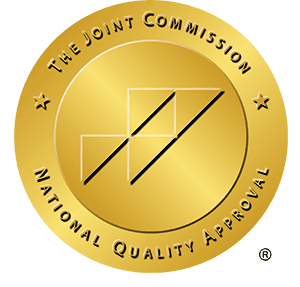
Post-Acute Withdrawal Syndrome: How PAWS Symptoms May Affect You
Every addiction recovery journey is unique, but individuals trying to abstain from drug or alcohol use typically experience withdrawal symptoms. But what about post-acute withdrawal syndrome (PAWS)? Individuals can experience a variety of PAWS symptoms weeks after abstaining from substance use. The length and severity of these symptoms vary. While these symptoms may cause mild to severe discomfort, they are manageable with the proper treatments and withdrawal management tools.
Furthermore, individuals need to educate themselves on withdrawal symptoms in general. Many people may attempt to detox from drugs and alcohol alone. While it is possible, this is extremely dangerous and not recommended. Instead, it would be best to consider seeking professional treatment and detox services. Services such as these offer around-the-clock care and support as you begin the road to recovery. Such services are also excellent ways to manage withdrawal and PAWS symptoms throughout detox and early treatment.
What You Should Know About Detox
The Centers for Disease Control and Prevention (CDC) describes substance use disorders (SUDs) as “treatable, chronic diseases characterized by a problematic pattern of use of a substance or substances leading to impairments in health, social function, and control over substance use.” Additionally, the more a person uses drugs or alcohol, the more their brain craves it. That is due to the chemical changes that occur in the brain over time. It is also because people must use more substances to experience the same effects, increasing their tolerance.
To recover from SUD, you must first detox from all substances. Detox is “a set of interventions aimed at managing acute intoxication and withdrawal.” Detox focuses on ridding and cleansing the body of these toxins. Detox services ensure you detox in a safe environment with 24/7 care.
Due to the impact of excessive drug and alcohol use, detox can be an uncomfortable process. The body is so accustomed to drugs or alcohol that it reacts negatively when deprived of these substances. This typically leads to withdrawal symptoms.
Withdrawal Symptoms?
When someone experiences physical and mental symptoms when trying to stop using substances, it is called withdrawal. The length and severity of these symptoms vary depending on what substance you were using and your genetic makeup. Substance use can cause physical changes in the brain, making the body unable to function without drugs or alcohol. This is what leads to withdrawal symptoms.
Alcohol Withdrawal
Withdrawal from alcohol typically begins within eight hours after your last drink and peaks around 24 to 72 hours. Symptoms may begin days later and last for weeks. Some of those symptoms include:
- Anxiety, panic, and nervousness
- Depression
- Irritability and mood swings
- Fatigue and insomnia
- Loss of appetite
- Nausea and vomiting
- Rapid heart rate
- Delirium tremens – a severe form of alcohol withdrawal that causes hallucinations, seizures, and fevers
Drug Withdrawal
Withdrawal from drugs can be similar to alcohol withdrawals. Other symptoms include:
- Intense cravings
- Hallucinations
- Extreme vomiting
- Muscle spasms
- Insomnia
- Restlessness
- Inability to regulate body temperature
- Severe muscle and bone pain
As mentioned, these symptoms typically occur immediately or soon after a person starts abstaining from drugs and alcohol. So you may now be wondering, what about PAWS symptoms?
What Are PAWS Symptoms?
UCLA Health describes PAWS as a “set of impairments that can persist for weeks or months after abstaining from a substance.” There is not enough evidence to indicate what causes PAWS symptoms. However, professionals in the field believe that the physical changes that occur in the brain and increase tolerance during substance use may play a part.
PAWS symptoms are sometimes similar to those observed in individuals with mood and anxiety disorders. That includes mood swings, insomnia, and anxiety. However, PAWS symptoms are also comparable to those of regular withdrawal. The severity of these symptoms also tends to fluctuate, sometimes disappearing and reappearing later in recovery.
Some of the PAWS symptoms seen in individuals recovering from SUD include:
- Impaired cognitive function or memory
- Extreme irritability or becoming easily stressed and overwhelmed
- Intense cravings for substances
- Anxiety, panic, depression, or obsessive-compulsive behaviors
- Trouble maintaining social relationships
Though many of these symptoms can impact your ability to function day-to-day, they can be managed.
How to Manage PAWS Symptoms
Because PAWS symptoms can last for months, treatment may go on for an extended period. These symptoms can, however, be managed through medication-assisted treatment (MAT). MAT uses behavioral therapies and medication to provide a whole-person approach to treatment and help manage withdrawal symptoms. It can also help with cases of long-term PAWS symptoms.
Several behavioral therapies, as well as individual and group counseling, can also help manage these symptoms, teaching you skills and helping you connect with peers in a way that allows you to cope with your symptoms healthily.
Experiencing withdrawal symptoms during detox is entirely normal. After an extended period of substance use, the body becomes so accustomed to drugs or alcohol it craves the substance intensely. When you abstain from said substances, it can cause mental and physical symptoms that can be severe and painful. While some attempt to detox at home, it can be dangerous because of the potentially harmful symptoms. That is why people are encouraged to detox within a professional detox facility, which can help manage symptoms of PAWS. PAWS symptoms can begin well after detox and occur for weeks or months. Nevertheless, behavioral therapies, medication-assisted treatment (MAT), and other interventions can help. For more information, call Healing Pines Recovery at (720) 575-2621.
Paul Leafstedt
Paul was born and raised in the beautiful state of Colorado. He went to college in California at CAL Poly Pomona, majoring in Mechanical Engineering. Being a person in recovery and always finding fulfillment in helping others succeed, Paul co-founded a treatment center in California with 4 other partners. Paul came back to Colorado to continue his journey in the field of addiction, and to share his vision for Healing Pines Recovery. “Colorado is such a magical place for me, its natural beauty and peace lend itself for the perfect environment to connect with yourself and others. Healing Pines is different, it’s real, you can feel it. What you see is what you get here. This is a safe place to dig deep and be vulnerable, to re-discover yourself, what the world has to offer and what you have to offer the world.”Begin Your Journey & Escape Addiction
The first step can be the hardest. Fill out the form or call us at (720) 575-2621. You will be connected with a Healing Pines Recovery specialist who can answer your questions and help you get started.
Let Us Help You
Speak to Someone Right Now







